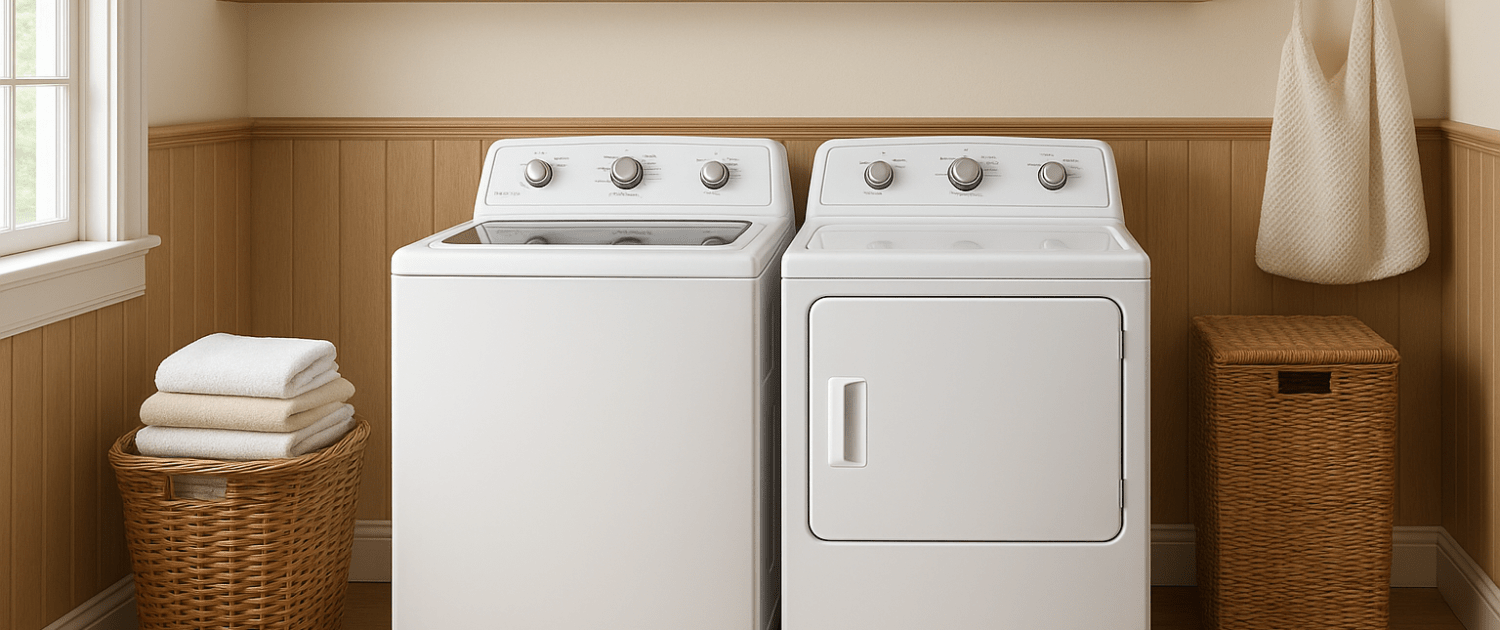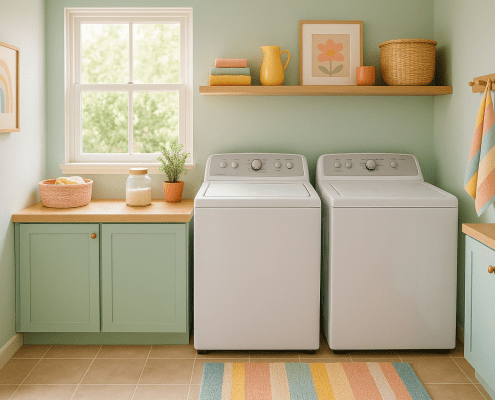GE Washer Thermistor Error? Fix It Fast With This Simple DIY Test!
Steven E / Wednesday September 17, 2025
Looking for the right part? Enter your appliance model number below to find the exact match and get your appliance running like new again!
Is your GE top-load washer flashing a thermostat error code and leaving you stuck with piles of laundry? Don’t worry, you’re not alone, and the solution is easier than you might think. When this error pops up, it usually means there’s a problem with the thermistor (sometimes called the thermostat) or with the main control board. Even if you’ve never repaired an appliance before, you’ll find the process manageable. By the end, you’ll have your washer back in action and your laundry routine running smoothly again.
Why the Thermistor Matters
The thermistor in your washer plays a critical role by monitoring water temperature and sending that data to the control board. When it fails, your washer can’t read temperatures properly, which can lead to error codes, cycle interruptions, or complete shutdowns.
A flashing thermostat error code is the washer’s way of telling you:
- It’s not getting the right resistance reading from the thermistor.
- Or the main control board is misinterpreting the signal.
By testing these parts, you can quickly narrow down the cause and fix the problem.
Why Thermistors Fail
Thermistors, like most electronic components, wear out over time. Common reasons include:
- Heat stress from repeated cycles and fluctuating water temperatures.
- Moisture exposure can corrode connectors or wiring.
- Manufacturing limits, parts naturally degrade after years of use.
Replacing the thermistor restores accurate temperature readings and clears the error code, keeping your washer running reliably.
When to Replace the Main Control
If your thermistor tests correctly but the error persists, the main control is the likely cause. Controls can fail from power surges, wear, or internal component breakdowns. While this guide focuses on the thermistor, knowing that the control is the next part to check keeps your troubleshooting complete.
Tools You’ll Need
Before starting, gather the tools you’ll use during the repair:
- 1/4-inch nut driver
- Multimeter (for testing resistance)
- Putty knife
Safety First
Always unplug the washer or switch off the breaker before you start. The only time you’ll reconnect power is for specific tests. Electrical safety should always be your top priority.
Step 1: Testing the Thermistor
The first step is checking whether the thermistor is still working.
- Access the console: Use your 1/4-inch nut driver to remove the three screws securing the top of the console.
- Rotate the console forward to expose the control board.
- Locate the connector: Find the three-wire connector with pink, black, and white wires.
- Disconnect it from the main control.
- Set your multimeter: Switch the meter to resistance mode (symbol looks like an upside-down horseshoe, or Ω).
- Test the thermistor: Place one probe on the black wire and the other on the white wire.
- At a room temperature of about 77°F, you should see around 47,000 ohms.
- Evaluate the reading: If resistance is within ±10%, the thermistor is good.
- If resistance is outside that range, the thermistor has failed.
Step 2: Considering the Main Control
If the thermistor tests correctly but the error code still shows, the issue likely lies with the main control board. While this guide focuses on the thermistor replacement, it’s important to know that the control is the next logical culprit if the thermistor is healthy.
Step 3: Removing the Thermistor
If your test shows the thermistor has failed, it’s time to replace it.
- Disconnect wires: Unplug the pink wire from the pressure switch.
- Disconnect all wires from the control board and set the board aside.
- Remove the front panel: Use your putty knife about 3–4 inches from each corner at the top to release the locking tabs.
- Rotate the panel forward, lift it up, and set it aside.
- Remove the top panel: With the 1/4-inch nut driver, remove the screws at the front corners. Lift the lid.
- Press up on the lid switch from underneath while pressing in the locking tab. Rotate the switch and push it down through the opening.
- Set the top panel aside.
- Access the thermistor: Remove the 1/4-inch screws along the bottom edge of the console bottom plate.
- Rotate the plate to reach the fill funnel mounting screws.
- Use the 1/4-inch nut driver to remove those screws.
- Pull the thermistor out from the top of the fill funnel.
Step 4: Installing the New Thermistor
Now it’s time to put in the replacement.
- Position the thermistor: Route the wires through to the top of the console bottom plate.
- Push the thermistor into the top of the fill funnel.
- Reinstall components: Secure the fill funnel with its screws.
- Rotate the console bottom plate back into position and secure it with the 1/4-inch screws.
- Slide the top panel back into place and secure it at the front corners.
- Feed the lid switch back into its slot, rotate to lock, and press until the tab clicks.
- Reinstall the front panel by aligning it with the hooks at the bottom and snapping it into place.
- Reconnect wiring: Reconnect the wires to the control and the pressure switch.
- Reinstall the console and secure it with the screws removed at the start.
- Plug the washer back in.
Step 5: Testing the Repair
With everything reassembled, run a test cycle.
- Start a normal wash or rinse cycle.
- Watch to confirm the error code no longer appears.
- Ensure the washer fills, agitates, and spins without interruption.
If the error is gone and cycles run normally, the thermistor replacement was successful.
Tips for a Smooth DIY Repair
Here are a few ways to make the repair process easier and stress-free:
- Take photos during disassembly so you can reference them later.
- Label wires if you’re worried about remembering connections.
- Keep screws organized in a cup or small container.
- Work in a clear space with good lighting.
Where To Find Us
If you need any replacement parts for your appliances, you can enter your model number at AppliancePartsPros.com to locate and order them quickly. Most orders arrive in just two business days, and we have tons of great information in our repair help section and YouTube videos to help you troubleshoot.
Stay connected with the latest DIY tips, tutorial videos, and repair guides by following us on Facebook, Instagram, and Twitter. We love hearing about your repair stories and successes. If you need more help or want personalized guidance, feel free to contact or call us at 877-477-7278. We’re ready to help you take on your next project with confidence!
Since 1999, AppliancePartsPros.com has helped millions of people repair their broken appliances by providing high-quality original parts at well below retail prices, free support and troubleshooting, and award-winning customer service from an expert, friendly, US-based customer support team!
With nearly a decade of experience in providing top-notch customer service regarding appliance parts and repair, Steven enjoys sharing practical advice, troubleshooting tips, and interesting information to help readers stay informed.






Leave a Reply
Want to join the discussion?Feel free to contribute!